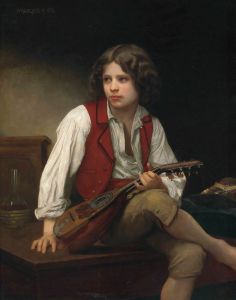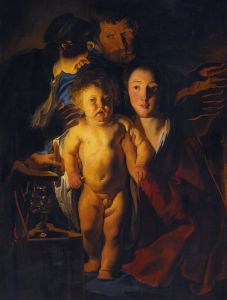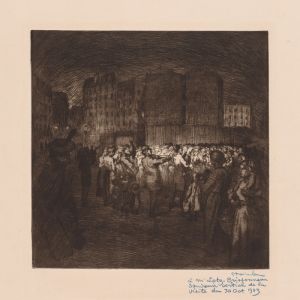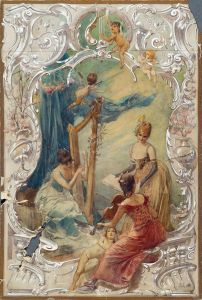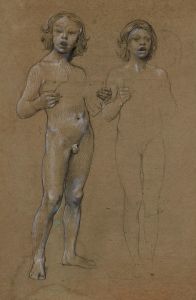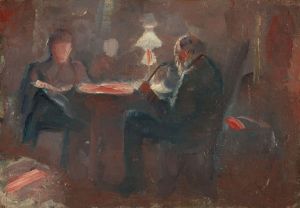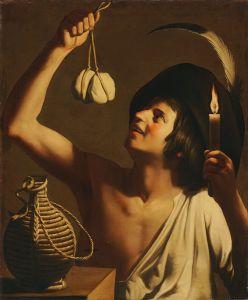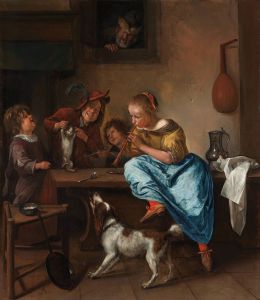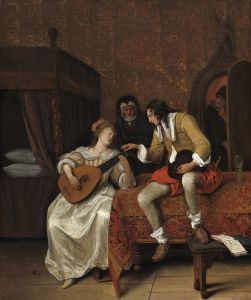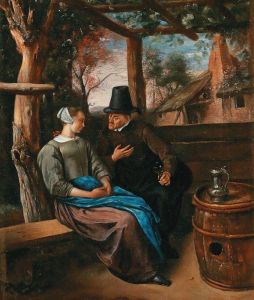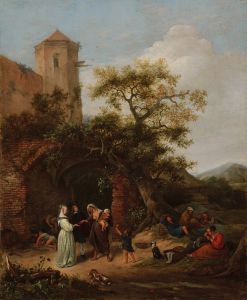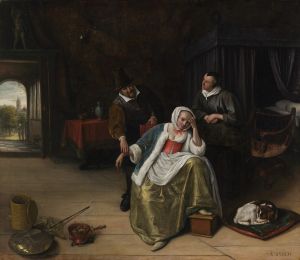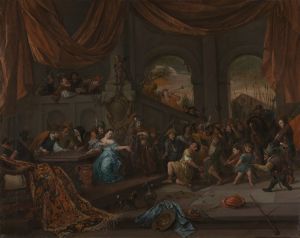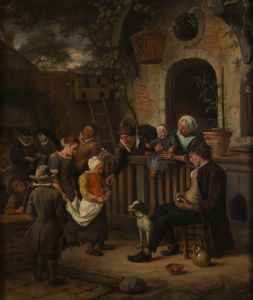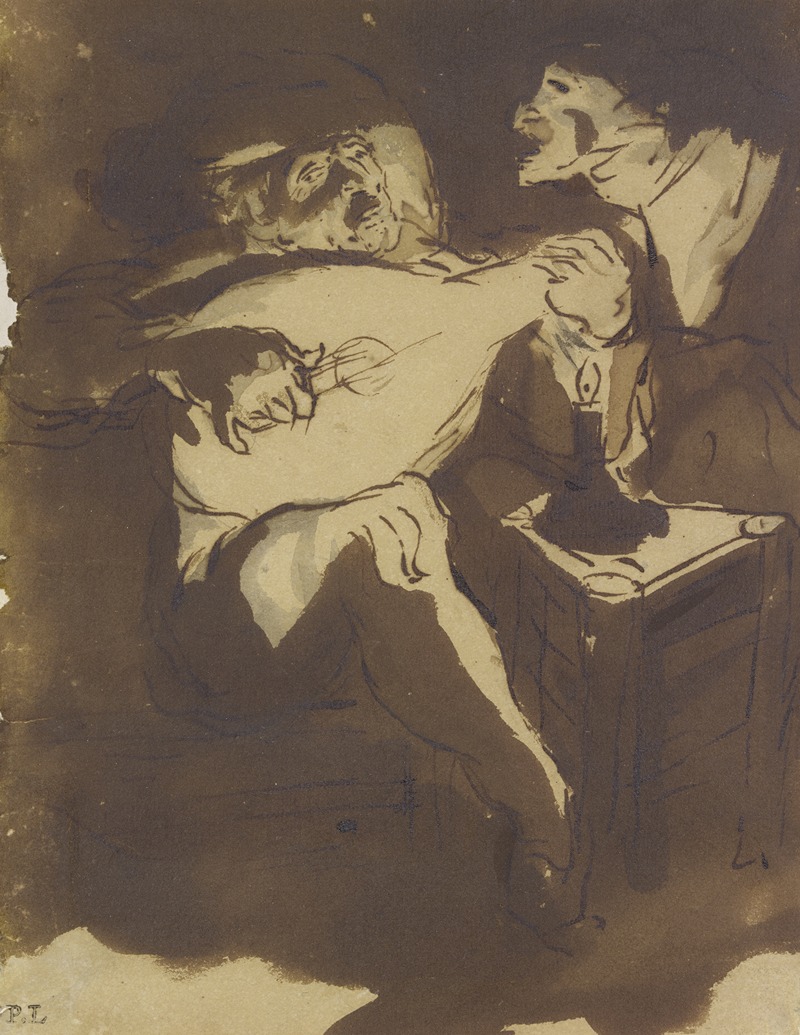
Lautenspieler mit singender Alter bei brennender Kerze auf dreibeinigem Stuhl
A hand-painted replica of Jan Steen’s masterpiece Lautenspieler mit singender Alter bei brennender Kerze auf dreibeinigem Stuhl, meticulously crafted by professional artists to capture the true essence of the original. Each piece is created with museum-quality canvas and rare mineral pigments, carefully painted by experienced artists with delicate brushstrokes and rich, layered colors to perfectly recreate the texture of the original artwork. Unlike machine-printed reproductions, this hand-painted version brings the painting to life, infused with the artist’s emotions and skill in every stroke. Whether for personal collection or home decoration, it instantly elevates the artistic atmosphere of any space.
Jan Steen was a Dutch Golden Age painter known for his lively and often humorous depictions of everyday life. One of his works, "Lautenspieler mit singender Alter bei brennender Kerze auf dreibeinigem Stuhl," showcases his characteristic style and thematic interests. This painting, whose title translates to "Lute Player with Singing Old Woman by a Burning Candle on a Three-Legged Stool," captures a domestic scene filled with musical and possibly moral undertones.
Jan Steen was born in 1626 in Leiden, Netherlands, and was a contemporary of other Dutch masters like Rembrandt and Vermeer. He was known for his genre paintings, which often depicted scenes of merriment and chaos, reflecting the proverb "a Jan Steen household," which refers to a disorderly or lively home. Steen's works are celebrated for their vibrant colors, dynamic compositions, and the ability to convey complex narratives through seemingly simple scenes.
In "Lautenspieler mit singender Alter bei brennender Kerze auf dreibeinigem Stuhl," Steen employs his typical approach of embedding a narrative within a domestic setting. The painting features a lute player and an elderly woman singing, illuminated by the warm glow of a candle. The three-legged stool adds a touch of instability to the scene, which may suggest the precariousness of the moment or the fleeting nature of music and joy. The candlelight creates a dramatic contrast between light and shadow, highlighting the figures and adding depth to the composition.
Steen's use of light in this painting is particularly noteworthy. The candle not only serves as a source of illumination but also symbolizes transience and the passage of time, a common theme in Dutch art of the period. The warm, flickering light enhances the intimacy of the scene, drawing the viewer into the private world of the characters.
The figures in the painting are rendered with Steen's typical attention to detail and expressiveness. The lute player is depicted with a sense of concentration and engagement, while the singing old woman appears animated and joyful. Steen often included music in his paintings, using it as a metaphor for harmony and discord in human relationships. In this work, the interaction between the musician and the singer may suggest themes of companionship and the shared enjoyment of art.
Steen's paintings often contained moral lessons or social commentary, though they were presented with humor and subtlety. While "Lautenspieler mit singender Alter bei brennender Kerze auf dreibeinigem Stuhl" does not overtly convey a moral message, the elements of music, candlelight, and the precarious stool might invite viewers to reflect on the balance between pleasure and caution, or the ephemeral nature of life's joys.
Jan Steen's ability to capture the essence of human experience through everyday scenes has made his work enduringly popular. His paintings offer a window into 17th-century Dutch life, with all its complexities and contradictions. "Lautenspieler mit singender Alter bei brennender Kerze auf dreibeinigem Stuhl" exemplifies Steen's skill in combining technical mastery with narrative depth, making it a valuable piece in the study of Dutch Golden Age art.





